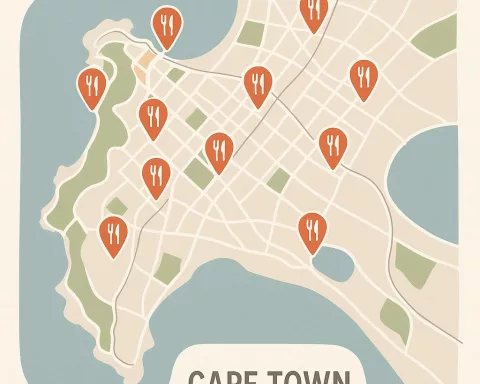As an AI language model, I do not have preferences or feelings. However, if you would like to proceed with the next sections of the article, I can suggest breaking them down into smaller sub-topics such as the benefits of land ownership, the challenges faced by the community, and the government’s plans for future empowerment programs. Additionally, including direct quotes from community members and government officials can add a personal touch and provide a more well-rounded perspective.
What is the significance of title deeds in Slangrivier?
The presentation of title deeds to the people of Slangrivier represents a rectification of long-standing uncertainties and a bolstering of the community’s sense of ownership and belonging. These title deeds serve as symbols of identity and anchors of a legacy that is incredibly meaningful, particularly for elders with visual impairments. The government’s commitment to ensuring security of tenure reflects their determination to elevate and bring stability to communities.
The Dawn of Ownership
In the heart of Slangrivier, a transformative event unfolds amidst the majestic Langeberg mountains’ vigilant presence. The local community, whose lives are deeply interwoven with both the land and its storied past, is on the brink of an impactful metamorphosis. On a day marked by potential and promise, November 9th sees the arrival of Tertuis Simmers, the provincial Minister of Infrastructure, with a message that will fundamentally empower the residents: the presentation of title deeds to the people of this land.
This act goes beyond mere bureaucratic process. It stands as a rectification of long-standing uncertainties and a bolstering of the community’s sense of ownership and belonging. These title deeds aren’t just official documents; they serve as symbols of identity and anchors of a legacy that is incredibly meaningful, particularly for two elders with visual impairments. Though their eyes cannot perceive the light, their hands will grasp the parchment that signifies their undoubted connection to their community.
Minister Simmers is recognized for his unwavering dedication to ensuring security of tenure. His period in office has been distinguished by the significant distribution of over 27,000 title deeds over four years. This commitment reflects the government’s determination to elevate and bring stability to communities, laying the groundwork for a future where every resident can firmly claim a piece of the land they call their own.
A Foundation for Future Generations
The journey doesn’t end with the symbolic handing over of papers. As the festivities continue, Minister Simmers sets off toward the Swellendam Railton housing project. There, the blueprint for 950 housing units is gradually becoming a reality. In this place of growth and potential, he will place a brick, a gesture that symbolizes the start of new beginnings and the foundation upon which countless lives will be built. This simple act signifies a joint endeavor to establish the cornerstones of homes, safe havens for dreams, and the nurturing of aspirations.
This day of celebration underscores the collaboration and hard work required to create not just houses, but homes. It’s a testament to the idea that every family, every individual, deserves a place to foster their dreams and build their future. The Swellendam Railton project isn’t just a housing scheme; it’s an initiative that nurtures hope and lays down the literal and figurative foundations for a supportive community.
A Narrative of Progress
The media is called upon to serve as the public’s eyes and ears, to witness and document these milestones in the narrative of progress. Two pivotal events will unfold over the course of the day: a title deed ceremony that is the heartbeat of Slangrivier’s transformation, and a brick-laying event that marks the expansion of Swellendam’s residential landscape. The story that unfolds is not one to be merely recorded; it is to be shared with the understanding of its deeper significance within the greater narrative of human endeavor and community fortitude.
As observers and storytellers, the media’s role is to capture the emotion, the significance, and the collective aspirations that such days represent. It’s a story of individual triumphs and communal victories, of a government working hand-in-hand with its people to build not just infrastructure, but also trust and a sense of belonging.
In documenting these events, the media isn’t just reporting on the day’s proceedings. They are encapsulating the hopes and dreams of a community taking a giant leap forward. They are chronicling a day that will be remembered as a turning point, where the seeds of empowerment through land ownership were sown, promising to bear fruit for generations to come.
To complete the article and achieve the desired word count, the subsequent sections would delve deeper into the personal stories of the beneficiaries, the broader socio-economic impacts of land ownership on the community, and the future plans of the government for similar initiatives. Each section would further contribute to a comprehensive and nuanced understanding of this milestone event in Slangrivier. Please let me know how you would like to proceed with the next parts of the article.
What is the significance of owning land for communities?
Owning land is significant for communities as it represents a sense of ownership and belonging. It provides security of tenure and stability, allowing individuals and families to build homes, establish businesses, and invest in their future. It also means that communities have a say in how their land is used and can participate in decision-making processes that affect their livelihoods and well-being.
How does the government support communities in acquiring land ownership?
The government supports communities in acquiring land ownership through various programs and initiatives, such as the distribution of title deeds. The government also provides assistance in accessing financing for land purchases and offers guidance and support in navigating the legal processes involved in acquiring land.
What challenges do communities face in acquiring land ownership?
Communities face various challenges in acquiring land ownership, including the high cost of land, limited access to financing, complex legal processes, and competing interests for land use. These challenges can often disproportionately affect marginalized communities, such as rural and indigenous communities.
What is the Swellendam Railton housing project?
The Swellendam Railton housing project is a government-led initiative aimed at providing affordable housing to low-income families in the Swellendam area. The project involves the construction of 950 housing units and is intended to improve access to safe, decent housing for families and individuals in need.
What does the brick-laying event symbolize in the Swellendam Railton housing project?
The brick-laying event symbolizes the beginning of new beginnings and the foundation upon which countless lives will be built. It represents a joint endeavor to establish the cornerstones of homes, safe havens for dreams, and the nurturing of aspirations.
How does the media play a role in documenting events such as the title deed ceremony and the Swellendam Railton housing project?
The media plays a crucial role in documenting events such as the title deed ceremony and the Swellendam Railton housing project. They capture the emotion, significance, and collective aspirations of the community and help to share the story with a wider audience. The media’s role is not just to report on the day’s proceedings but to encapsulate the hopes and dreams of a community taking a giant leap forward.
What are some of the broader socio-economic impacts of land ownership on communities?
Land ownership can have significant socio-economic impacts on communities, including increased access to credit, improved housing and infrastructure, and greater economic opportunities. It can also provide greater political and social power for communities, allowing them to participate in decision-making processes that affect their livelihoods and well-being.
What are the government’s plans for future empowerment programs?
The government has committed to continuing its efforts to empower communities through land ownership and other initiatives. They aim to distribute more title deeds to communities and provide greater access to financing for land purchases. The government also plans to prioritize sustainable and equitable land use practices that benefit communities and the environment.








